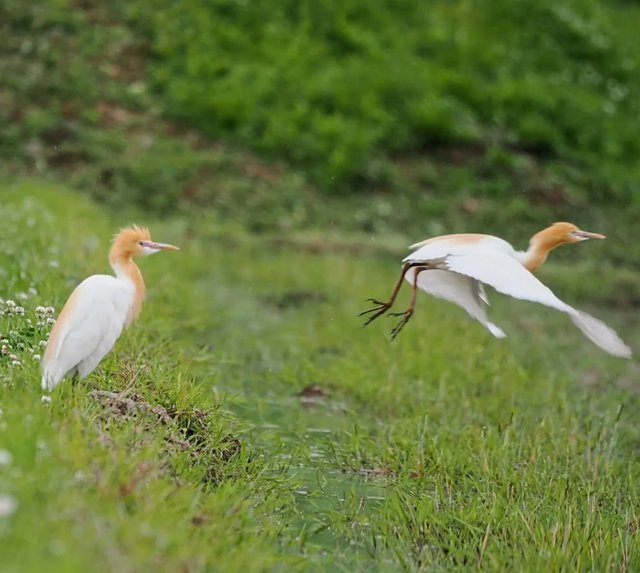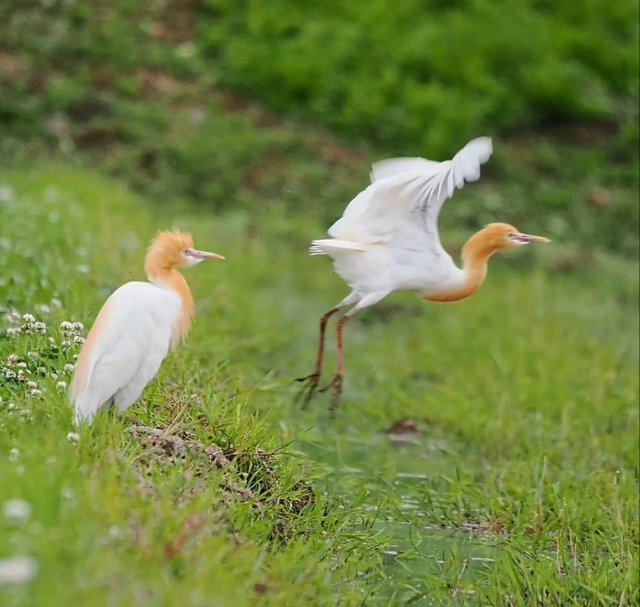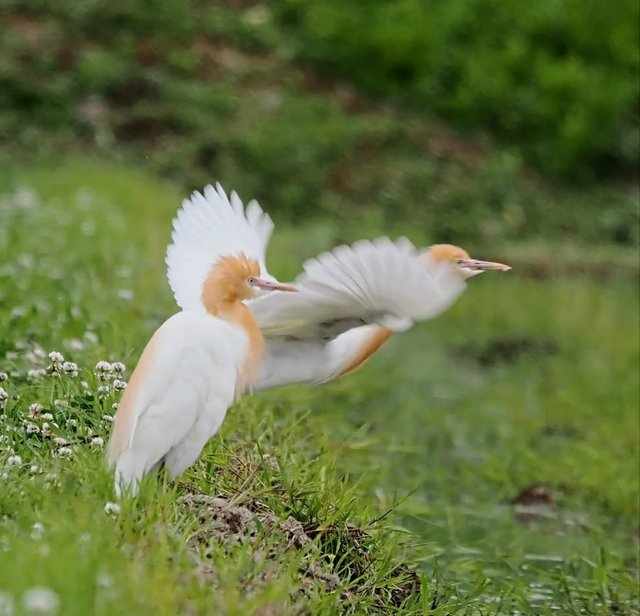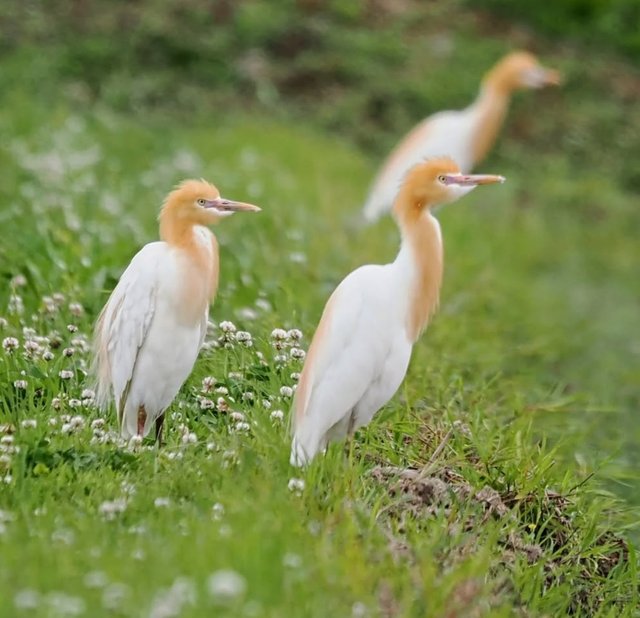Cattle Egret So Cute Bird
The Cattle Egret: A Global Nomad with Humble Origins
The Cattle Egret is one of the most remarkable birds in the heron family—not for its grandeur or song, but for its adaptability, behavior, and extraordinary global journey. Originally native to parts of Asia, Africa, and southern Europe, this unassuming white bird has, over the past century, expanded its range to nearly every continent, making it one of the most successful avian colonizers of modern times.
Physical Description
The Cattle Egret is a relatively small, stocky egret. It stands about 45–52 cm tall with a wingspan of around 88–96 cm. Its plumage is generally all white, but during the breeding season, it develops buff or golden patches on its head, chest, and back. Its legs and bill are yellow, turning more vivid during the breeding season.
What sets the Cattle Egret apart from other egrets is not its looks, but its behavior and ecological niche.
Ecological Role and Behavior
Unlike many herons and egrets that are associated with wetlands and aquatic hunting grounds, the Cattle Egret is primarily a terrestrial forager. It has developed a symbiotic relationship with grazing animals like cattle, buffalo, and even agricultural machinery. As these large animals move through grasslands, they disturb insects—grasshoppers, flies, and other invertebrates—that the egret quickly snaps up.
This behavior has earned the bird its common name and made it a frequent sight in farmlands and savannas. In fact, it is often seen perched on the backs of cattle or striding confidently alongside tractors and plows, always alert to a potential meal.
The Cattle Egret is opportunistic and intelligent, adjusting its diet to include not only insects but also frogs, spiders, and even small mammals in some regions. This adaptability has been key to its global success.




%20(9).jpeg)